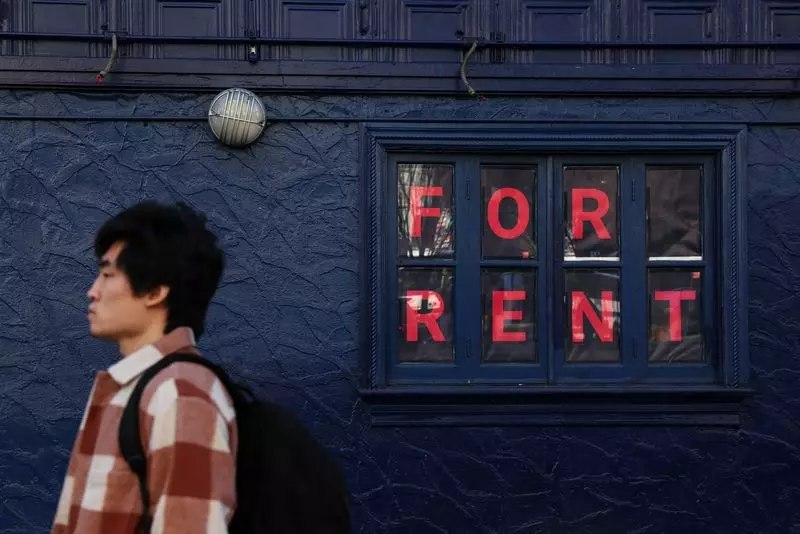The implications of rent inflation on consumers have become increasingly evident according to the latest analysis from the Federal Reserve Bank of Cleveland. In a recent report, economists predicted that rent inflation is expected to remain significantly above pre-pandemic norms, which hovered around 3.5%. Their forecast suggests it will take until mid-2026 for rent inflation to stabilize at a more manageable level. This prolonged period of elevated rent inflation poses severe challenges for policymakers, particularly as the Federal Reserve aims to control overall inflation, which is targeted at 2%.
The core issue contributing to this rent inflation is the substantial disparity between current rents for new leases and those for existing tenants. The report highlights that this gap has widened notably since the pandemic, increasing from just above 1% to an estimated 5.5% by September 2024. This divergence indicates that many renters are likely to experience rising costs as these increases in new leases eventually impact existing rental agreements. As a direct result, many households may find themselves grappling with financial pressures for longer periods, which could stifle consumer spending and economic recovery.
The persistence of rent inflation could have broader ramifications for the U.S. economy. The Federal Reserve’s current strategy involves implementing a series of interest rate cuts designed to stimulate growth and steer inflation back to the target level. However, if rent inflation remains obstinate, it could complicate these efforts and prolong the economic challenges facing consumers. Fed officials and economists express confidence in a gradual return to price stability, but the stubborn nature of rent inflation introduces uncertainties that could affect monetary policy effectiveness.
For example, observers note that, while annualized rent growth has decreased from 6.8% in 2023 to an annualized rate of 4.6% this year, such figures may still reflect a slower pace of growth rather than an outright reduction in costs. This tepid decline, while encouraging, might not sufficiently alleviate the burdens placed on renters, particularly those in lower-income brackets who are more sensitive to housing costs.
Analyzing the Factors Behind Sticky Rent Prices
Several key factors contribute to the stickiness of rent prices in the current market. Experts suggest that the lag between new lease agreements and adjustments to existing rents is the primary driver behind this phenomenon. With new rental prices beginning to stabilize, it is anticipated that current renters will soon feel the impact of these shifts as landlords adjust lease renewals to align more closely with current market conditions. Moreover, a cooling job market has contributed to slowing rent increases, which some Fed leaders believe could eventually lead to a more pronounced decrease in overall rental costs.
Notably, Fed officials recognize the crucial role that housing costs play in contributing to inflation metrics. As highlighted by St. Louis Fed leader Alberto Musalem, declining rent inflation is expected to lower the housing component within the overall price indexes. This trend could signal a positive shift but requires cautious monitoring as shifts in market conditions may very well create fluctuations in rental costs.
The trajectory of rent inflation and its implications for the overall economy remain complex and multifaceted. Federal Reserve officials are optimistic that the continued easing of new rental market pressures, coupled with proactive monetary policies, will lead to a reduction in the overall inflation rate over the next few quarters. However, the challenges posed by rent inflation underscore the cyclical nature of economic trends, pushing both consumers and policymakers to reconsider their strategies moving forward.
Understanding the intricacies of rent inflation is essential for consumers, economists, and policymakers alike. As new rental costs begin to stabilize and economic indicators shift, it will be critical to observe how these dynamics evolve. The interaction between rising rents and inflation targets will undoubtedly shape the economic landscape for the foreseeable future, and addressing these challenges head-on will be pivotal in ensuring sustainable economic growth and consumer stability.

